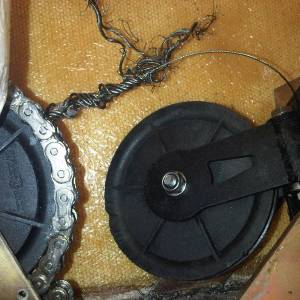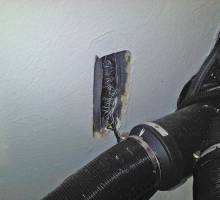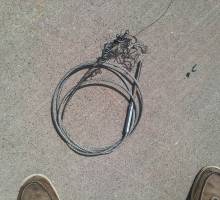
Steering Failure - Lessons from an unpleasant experience.
Yesterday was a perfect sailing day with a westerly F5 gusting F6. We were taking a Jeanneau 54DS out for a shakedown sail after some adjustments to the in-mast furling gear. We decided to unfurl in the harbour as there were lumpy seas beyond the harbour entrances. Just as we headed into wind we lost steering on the starboard helm and 30 secs later on the port helm too. Before we knew it the yacht was going round in circles and getting perilously close to the harbour wall and some rocks.
The initial diagnosis was that this was a steering cable failure. We still had a rudder. Unfortunately not being as familiar as I should have been with this yacht I did not know where the emergency tiller was located. This was no time to start emptying lockers.
The second steering option was to use the vessel's autopilot. The actuator arm of the autopilot is connected directly to the steering quadrant on most (but not all) yachts. With some directional control restored we moved into the centre of the harbour to practice how we would return to our "stern to" berth back at the marina with a steady F5 on the beam. We alerted the marina on the VHF and they offered us a bows to berth but not a side on hammerhead berth which we could have drifted on to. Any repair in the coming days would be made very awkward with a "bows to" berth so I elected to go back to the "stern to" berth we had left 30 minutes earlier.
The autopilot works best when the boat is moving forward at a good speed. It does not work at all in reverse as it commands the rudder in the opposite direction to that required.
To cut a long story short we glided back into the marina slightly faster than normal and managed to reverse into the berth without putting a scratch on the boat.
These are the lessons I learned yesterday:
1. Know where you emergency tiller is stowed!
2. Know how your autopilot drives the rudder. If it is connected to the quadrant then you have an alternative way of the steering the boat.
3. Ask the marina for an easier berth and for assistance. They prefer to help you than have to untangle you from other peoples mooring lines.
4. It's a good idea to practice manoeuvring the vessel in close quarters under autopilot. One day you may have to do it for real.
5. Anticipate the headings you will need to take up as you come in to the marina and use the steering compass to predict the headings you will need to punch into the autopilot.
6. Plan an exit strategy for a go around if required. Never box yourself in.
7. In reverse the autopilot is useless! It will drive you in the wrong direction. Don't try reversing unless you have a bow thruster for directional control and even then you will need to need to play with the plus and minus buttons on autopilot to keep the rudder on the centreline.
Yesterday I had a lucky escape! Don't forget to examine your cable and pulley steering assembly at least once a year - prevention is better than cure!



